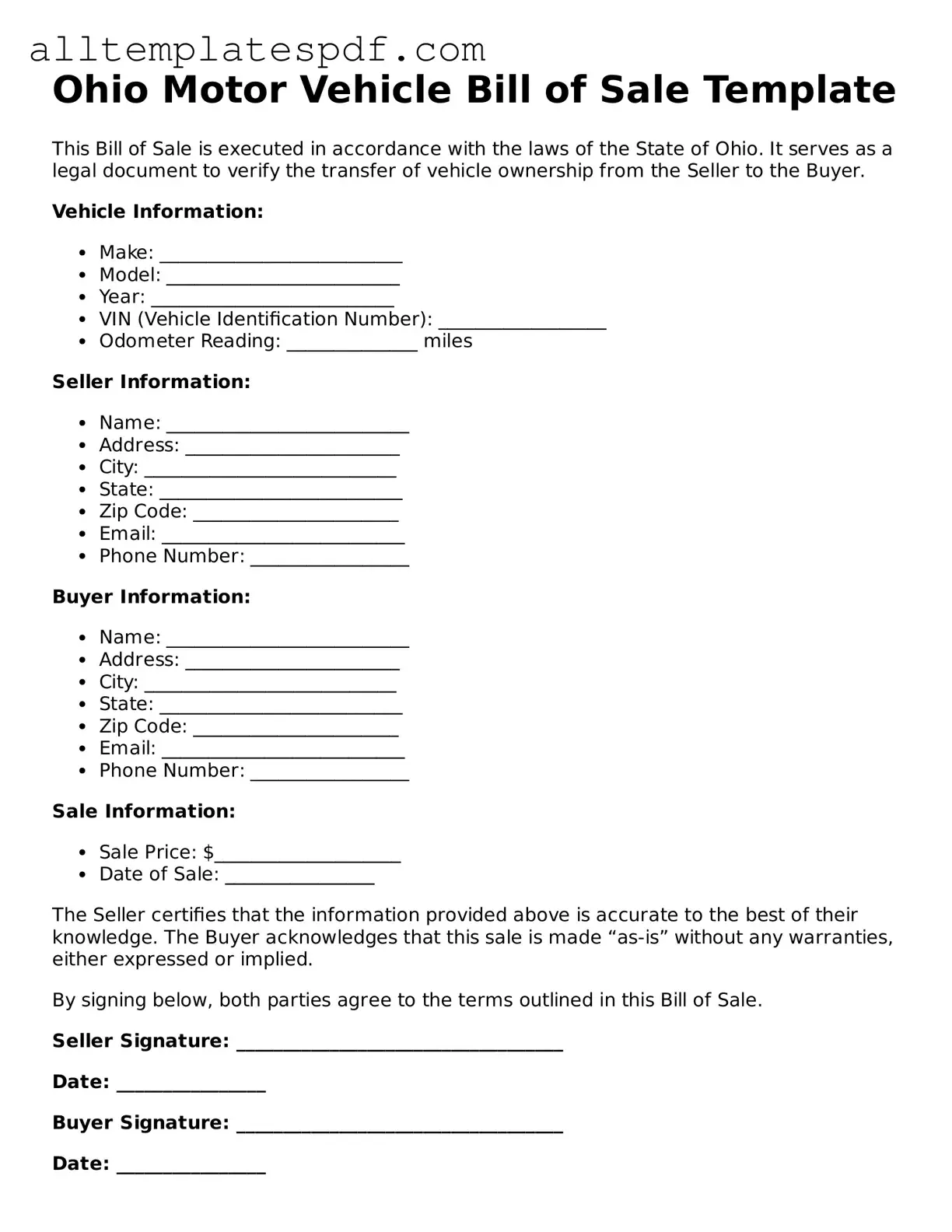Filling out the Ohio Motor Vehicle Bill of Sale form can seem straightforward, but several common mistakes often lead to confusion or delays. One frequent error is neglecting to include the date of the transaction. This detail is crucial, as it establishes when the sale took place and can affect the transfer of ownership.
Another common mistake is failing to provide complete vehicle information. This includes the vehicle identification number (VIN), make, model, and year. Omitting any of these details can create complications when registering the vehicle or proving ownership.
Many individuals also forget to include the purchase price. This information is essential not only for the buyer and seller but also for tax purposes. Leaving it blank can lead to misunderstandings or potential disputes down the line.
In addition, some people mistakenly think that signatures are optional. Both the buyer and the seller must sign the form for it to be valid. Without these signatures, the document lacks authenticity and may not hold up in legal situations.
Another oversight involves not providing accurate contact information for both parties. Including phone numbers and addresses ensures that both the buyer and seller can communicate effectively if any issues arise after the sale.
Additionally, some individuals may use outdated forms or templates. It's important to ensure that you are using the most current version of the Ohio Motor Vehicle Bill of Sale form, as regulations and requirements can change over time.
Misunderstanding the purpose of the Bill of Sale can also lead to errors. This document serves as proof of the transaction and is not a title transfer. Buyers and sellers should be aware of the distinction to avoid confusion during the registration process.
Another mistake is not keeping a copy of the completed Bill of Sale. Retaining a copy for personal records can be invaluable in case any disputes arise or if proof of sale is needed in the future.
Some individuals may also forget to check for typos or inaccuracies before submitting the form. Simple errors can lead to significant problems, so it is wise to review the document carefully.
Finally, many people overlook the importance of understanding state-specific requirements related to the Bill of Sale. Each state may have different laws and regulations, so being informed about Ohio's specific requirements is essential for a smooth transaction.
